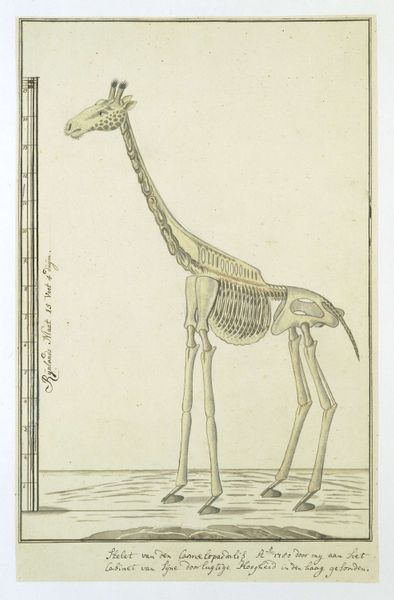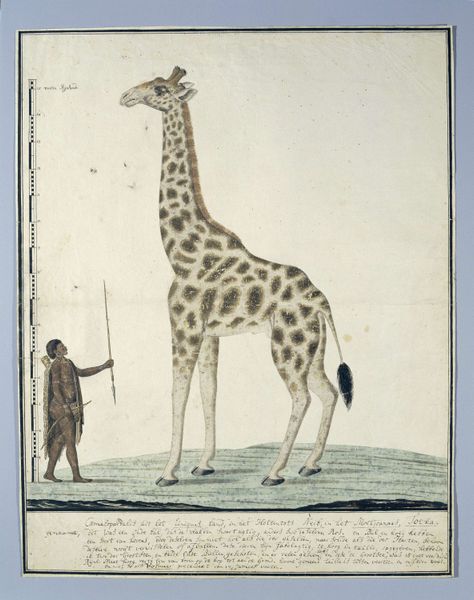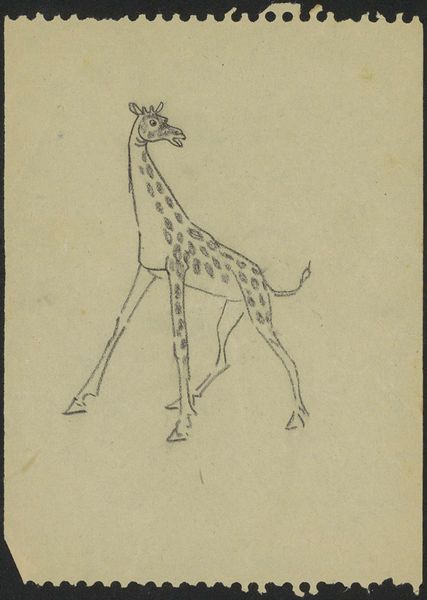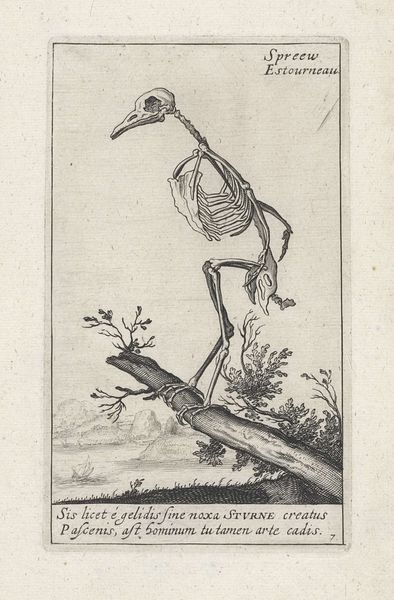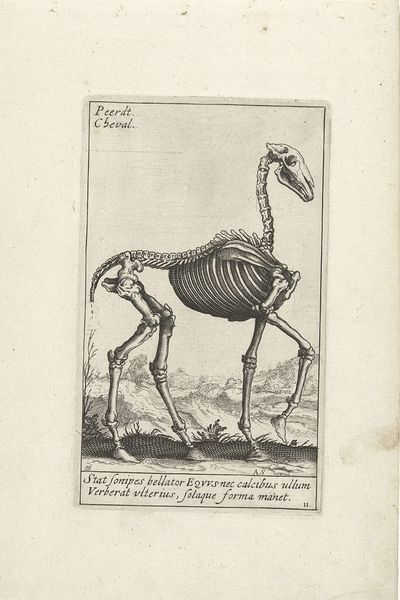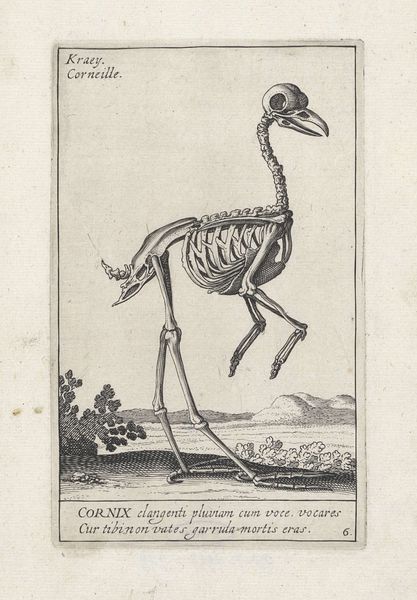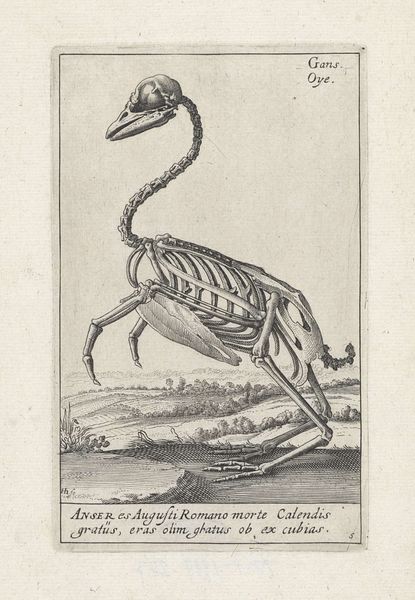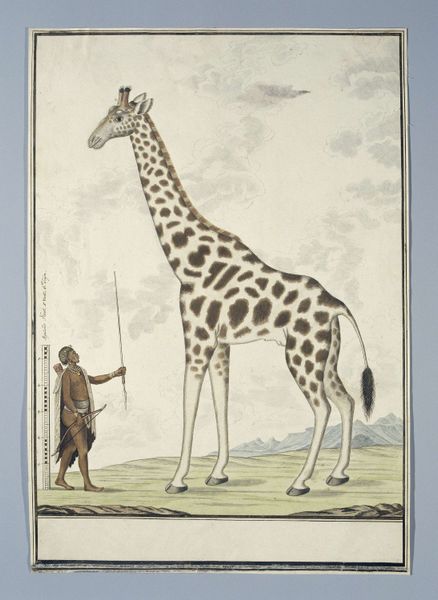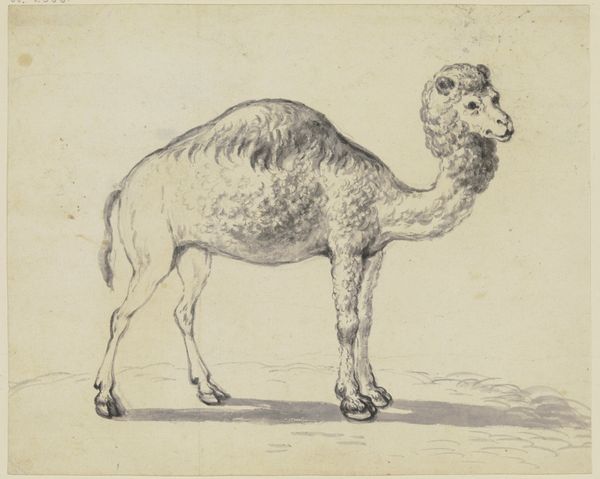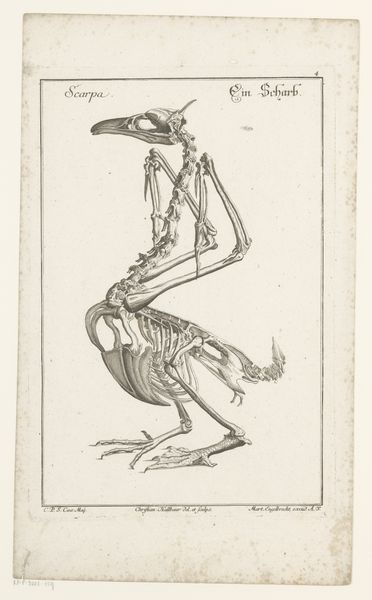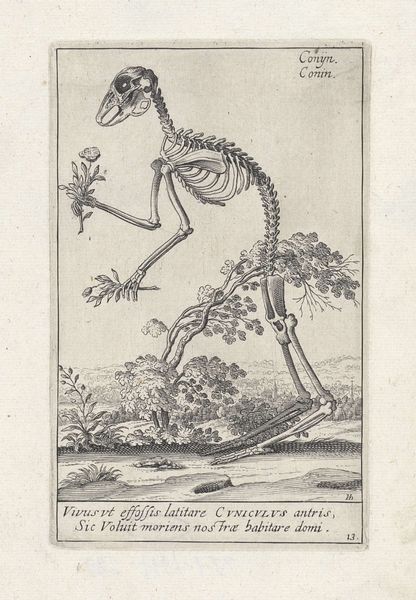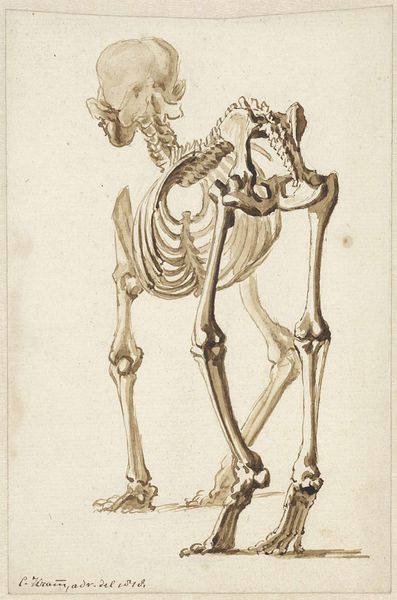
drawing, pencil
#
drawing
#
pencil
#
line
#
realism
Dimensions: height 660 mm, width 480 mm, height 420 mm, width 260 mm, height 371 mm, width 256 mm
Copyright: Rijks Museum: Open Domain
Curator: Standing before us is *Giraffa camelopardalis (Giraffe), skeleton,* a drawing, likely in pencil, attributed to Robert Jacob Gordon and possibly dating back to 1779. What strikes you most about it? Editor: A strange sense of fragility, despite its size. The rendering, using what appears to be very fine pencil lines, makes it seem almost ghostly. I mean, we are viewing a giraffe, an animal full of majesty. This skeletal depiction offers an incredibly unique, if unnerving, visual impression. Curator: I see your point about fragility. Gordon, serving as a military commander for the Dutch East India Company, traveled extensively through Southern Africa. His sketches often served not just as scientific records, but reflected the complicated power dynamics inherent in colonial exploration. This giraffe skeleton, divorced from its living form, embodies a process of objectification and control. Editor: Precisely. Dissecting it this way highlights the political act of observing and classifying nature for European dominance. What about the giraffe itself? It's presented as almost an empty vessel – it’s all bones, like some macabre trophy, don’t you think? Curator: The clean lines certainly evoke a scientific sensibility prevalent during the Enlightenment era. There's an objectivity that aims to remove any emotional response. And that’s further amplified by its juxtaposition against that almost clinical measuring scale that’s rendered on the left. This tool is used as if to diminish its majesty into standardized units. But think about how even the choice of representing it solely as bone speaks to contemporary attitudes. Editor: Yes, it raises broader questions about humanity's relationship with nature. And the ethics of display – consider what this kind of representation might have meant for notions of race, scientific racism and related issues prevalent in those colonial times. These studies further served to objectify cultures just like nature. Curator: I appreciate you drawing that connection between scientific categorization and the human politics embedded within. This artwork challenges us to dissect the layers of observation, control, and the hidden agendas behind ostensibly objective scientific documentation. Editor: Indeed. Hopefully, it compels us to reflect upon those echoes of our present and our continuing negotiation and intersection between politics, observation, and scientific interpretation.
Comments
No comments
Be the first to comment and join the conversation on the ultimate creative platform.
